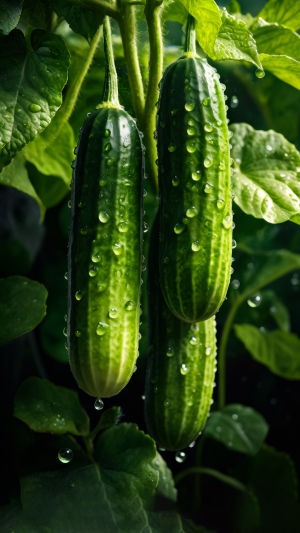Cucumbers are a rewarding and relatively easy vegetable to grow, making them a popular choice for home gardens.
Their crisp texture and refreshing taste can enhance any dish, from salads to sandwiches. Here’s a concise guide to help you plant and maintain cucumbers successfully.
How to Grow Cucumbers, Complete Growing Guide
Video by The Gardening Channel With James Prigioni
<h3>1. Choosing the Right Variety </h3>
Start by selecting a cucumber variety that suits your needs and growing conditions. There are two main types: slicing cucumbers and pickling cucumbers. Slicing cucumbers are typically larger and are perfect for fresh consumption, while pickling cucumbers are smaller and ideal for preservation.
<h3>2. Planting Time and Location </h3>
Cucumbers thrive in warm temperatures and should be planted after the last frost date in your area when the soil temperature has reached at least 60°F (15°C). Choose a sunny spot in your garden, as cucumbers require full sun to grow vigorously. A location with well-drained soil is crucial to prevent root rot and other issues.
<h3>3. Soil Preparation </h3>
Cucumbers prefer rich, loamy soil with a pH between 6.0 and 7.0. Prepare the soil by incorporating organic matter such as compost or well-rotted manure to improve fertility and drainage. If your soil is heavy clay, consider planting cucumbers in raised beds or containers to enhance drainage.
<h3>4. Planting </h3>
You can start cucumbers from seeds or transplants. If starting from seeds, sow them directly into the garden about 1 inch (2.5 cm) deep and 6 inches (15 cm) apart once the soil has warmed. For a head start, you can also start seeds indoors 3-4 weeks before the last frost and transplant seedlings when they are about 3-4 inches (7.5-10 cm) tall.
<h3>5. Watering and Fertilizing </h3>
Cucumbers need consistent moisture to grow well. Water them deeply once a week, or more frequently during hot, dry periods, to keep the soil evenly moist. Avoid overhead watering, which can lead to fungal diseases; instead, water at the base of the plants. Fertilize cucumbers with a balanced fertilizer or one high in potassium and phosphorus to support fruit development.
<h3>6. Supporting Growth </h3>
Cucumbers are vining plants that benefit from support. Use trellises, cages, or fences to keep the vines off the ground. This not only saves space but also helps reduce the risk of pests and diseases while making harvesting easier.
<h3>7. Pruning and Maintenance </h3>
Regularly remove any yellow or diseased leaves to prevent the spread of diseases. You can also prune the vines to encourage better airflow and more fruit production. Keep an eye out for common pests like cucumber beetles and aphids, and address any infestations promptly.
<h3>8. Harvesting </h3>
Harvest cucumbers when they are firm and green. For slicing cucumbers, pick them when they are about 6-8 inches (15-20 cm) long. For pickling varieties, harvest when they are smaller, about 3-4 inches (7.5-10 cm) long. Regular harvesting encourages the plant to produce more fruit.
By following these guidelines, you can enjoy a bountiful harvest of fresh, crunchy cucumbers. Happy gardening!
Lykkers, we'd love to hear about your own cucumber-growing experiences and any tips you might have! Have you tried different varieties or techniques that worked particularly well for you?
Share your thoughts and stories with us in the comments below. Let’s continue this gardening journey together and inspire each other!





